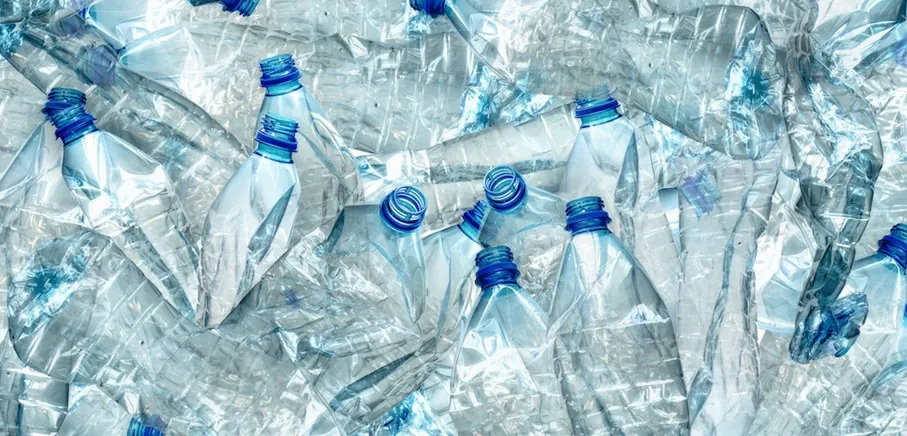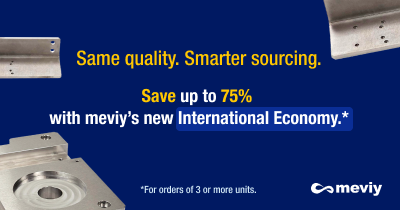BLOG » What is PET? Material Overview for Engineering
What is PET? Material Overview for Engineering
Polyethylene Terephthalate is widely recognized as the material used in PET bottles. It is a versatile transparent resin material extensively used in both daily life and industrial fields. This article explains the applications, characteristics, and differences from similar materials of Polyethylene Terephthalate.

What is PET?
Polyethylene Terephthalate (abbreviated as PET) is a resin made by combining terephthalic acid and ethylene glycol. It is widely recognized as the most used resin globally, finding applications in items such as PET bottles, clothing, food trays, industrial films, magnetic tapes, and more.
This material was invented in the United Kingdom in 1941, while the manufacturing process began in 1948, and it was initially sold as polyester. Different countries have different trademarks for PET. In the United States, it is known as “Dacron” under DuPont’s trademark. In Japan, it is jointly trademarked as “Tetoron” by Teijin and Toray. In the UK, it is also called “Terylene.”
Main Applications of Polyethylene Terephthalate:
PET is notably used in the food industry, and its production for PET bottles began in Japan in 1977. The lightweight and shatter-resistant nature of PET bottles provided numerous advantages over the previously prevalent glass bottles.
There are various grades depending on the application, and names and handling grades may vary between material manufacturers, so it is advisable to check with the manufacturer’s catalog.
Synthetic Fiber:
Polyethylene Terephthalate is widely used as a synthetic fiber, referred to as polyester, constituting approximately 30% of all synthetic fibers. Polyester, known for its soft touch and excellent heat retention, is extensively used in clothing items such as fleece, sweaters, and shirts. Beyond clothing, its durability and quick-drying properties make it suitable for curtains, carpets, ropes, tents, outdoor sheets, and various other applications. Different grades exist based on catalysts and polymerization methods when used as a synthetic fiber.
Engineering Plastic:
Polyethylene Terephthalate used for industrial purposes is classified as engineering plastic. Engineering plastic is a high-performance plastic employed in various applications, including films, magnetic tapes, electronic components, electrical product housings, partitions, displays, and more. Additionally, it is frequently used as Fiber Reinforced Plastics (FRP), where glass fibers are added for reinforcement. Glass Fiber Reinforced Polyethylene Terephthalate (GF-PET) is a lightweight, yet durable material utilized in automotive components. Lastly, engineering plastic is also available in plate form for use as machine and cutting materials.
Food Containers:
One of the primary applications of Polyethylene Terephthalate is in the production of food containers, including PET bottles, plates, egg packs, and more. The reasons for its popularity in food containers include its high transparency, ease of molding, and lightweight nature. Moreover, food containers made from PET are easily recyclable, contributing to recycling efforts in many countries.
Advantages of PET
1. Cold Resistance: It endures temperatures as low as -60℃.
2. Transparency: PET exhibits high transparency, making it suitable for applications like food containers and industrial films where the visibility of contents is essential.
3. Water Resistance: The material is not prone to deformation due to moisture, making it suitable for liquid containers.
4. Electrical Insulation: PET has a high electrical insulation capacity with an arc resistance of 90–120 seconds, surpassing general-purpose plastics.
5. Environmental Impact: Pet is easily recyclable, making it a material with relatively low environmental impact.
Disadvantages of PET
1. Low impact resistance: When used as engineering plastic, reinforced variants, often incorporating glass fibers, are commonly employed.
2. Hydrolysis at High Temperatures or Alkaline Atmospheres
3. Weak to Acids
Differences from Other Plastics - PE, PVC, PP
Difference with Polyethylene (PE):
Also known for chemical resistance and electrical insulation, PE is used for containers and widely in the form of vinyl bags. It is softer and more susceptible to damage than PET. It has lower transparency compared to PET.
Difference with Polyvinyl Chloride (PVC):
PVC is well-balanced in terms of chemical resistance, electrical insulation, flame resistance, and weather resistance. However, it has lower heat resistance compared to PET. PET can endure temperatures of around 150℃, while PVC softens at approximately 70–80℃. PVC also has lower transparency than PET.
Difference with Polypropylene (PP):
PP is more cost-effective than PET but excels in heat resistance and chemical resistance. However, it is more vulnerable to impact, particularly at low temperatures. Additionally, it tends to whiten under UV exposure.
Conclusion
PET is one an extensively used resin worldwide. This material is made with terephthalic acid and ethylene glycol which undergo a chemical reaction at high temperature.
Polyethylene Terephthalate is widely used in our daily lives for items like PET bottles and polyester. In industrial applications, it finds use in films, magnetic tapes, and electronic components. While possessing excellent properties like heat resistance, cold resistance, chemical resistance, and electrical insulation, it falls short in impact resistance. Hence, in industrial applications, it is often used as Fiber Reinforced Plastics (FRP), incorporating glass fibers for reinforcement. Although it is fundamentally a high-heat-resistant material, caution is needed as it deforms at around 50℃ when used in PET bottles. Similar materials include polyethylene, polyvinyl chloride, and polypropylene.
